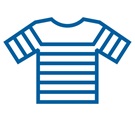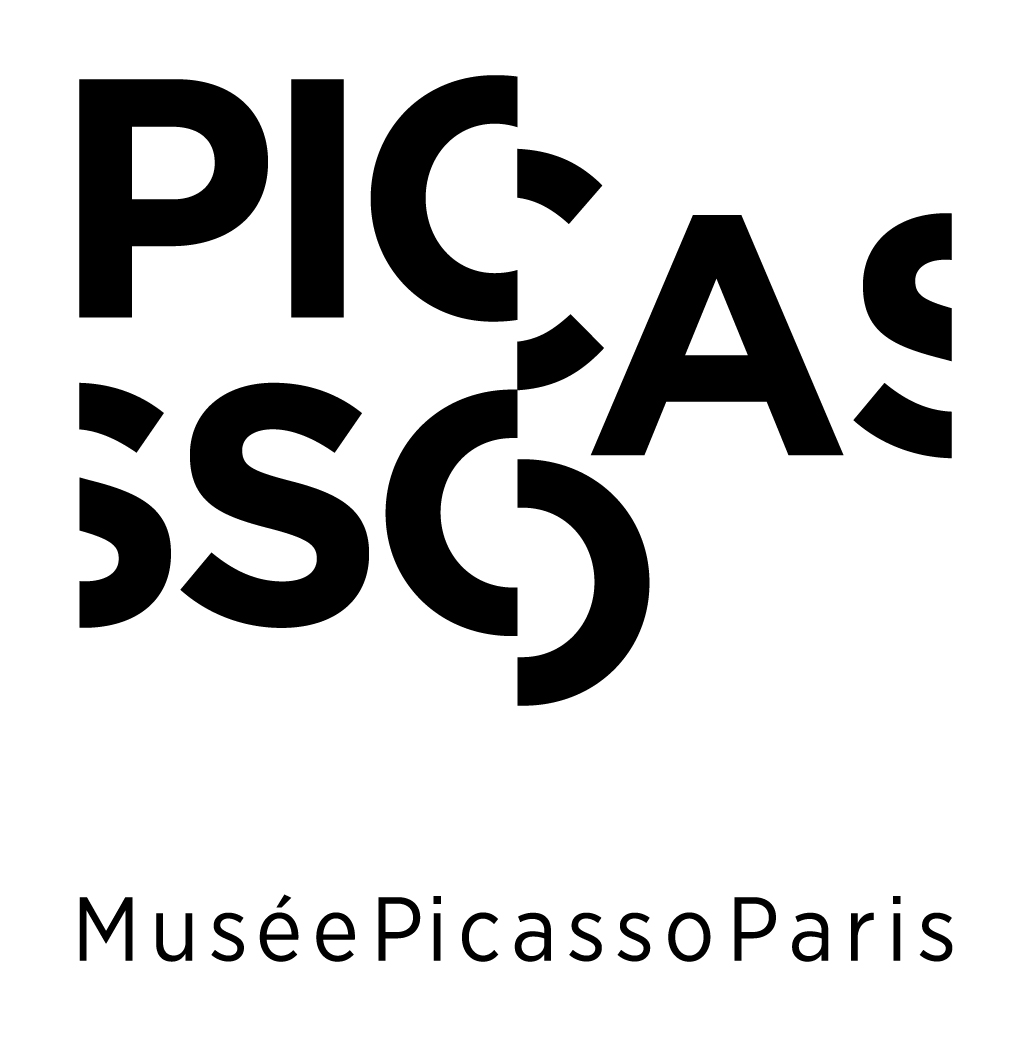ROOM 0.1
Welcome to this exhibition of Philip Guston’s work!
The American painter Philip Guston was born in 1913 and died in 1980. As a child, he wanted to be a comic book artist. Later, his paintings and drawings told the story of the United States. His works protested against war and racist violence, and also mocked politicians.
In the exhibition rooms, you’ll follow the development of his highly diverse work, which is both humorous and profound.
Look for this symbol to guide you around the exhibition!

Sleeping, 1977, oil on canvas, 213 × 175 cm
Why keep your shoes on during a nap? So you can get back to work quickly! This painting is a self-portrait, meaning that Philip Guston is depicting himself. But he is not shown in a flattering position: here he appears to be sleeping between two night-time painting sessions. This type of portrait seems amusing, far removed from the image of a serious artist, but it is also personal. Wedged in his large painting with a dark background, what is Guston dreaming about?
ROOM 0.2
Bombardment, 1937–38, oil on chipboard, 121 cm
Compare this work with Pablo Picasso’s Tête de cheval next to it. Both paintings condemn the bombing of the small Basque town of Guernica by Nazi Germany in 1937, but they depict the horror in very different ways. A great admirer of Picasso, Philip Guston however developed his own unique style of painting. Notice the shape of this painting and the destructive energy radiating from its centre. What is its effect on the figures depicted and on the viewer?
ROOM 0.3
Poor Richard (ensemble)
This President of the United States really does look weird! Philip Guston tells the story of Richard Nixon’s life in comic strip form: his studies, his travels . . . Nixon looks ridiculous, especially with his distorted face! This is what we call a “caricature” – a technique used by artists to mock those who take themselves too seriously – like politicians. Pablo Picasso also used it against the Spanish dictator Franco in the engravings on display behind you. Don’t you agree that humour is even more effective than violence when it comes to exposing dishonesty?
Richard Nixon Richard Nixon was President of the United States from 1969 to 1974. Those years saw numerous protests against the Vietnam War. Sometimes violently quelled, these protests brought together mainly young people, students and artists who opposed the president’s decisions. In 1972, journalists discovered that Nixon had planted hidden microphones to spy on his political opponents which led to scandal, and he was forced to resign.
ROOM 0.4
Painting, 1954, oil on canvas, 160 × 152 cm
Painting, 1952, oil on canvas, 121 × 129 cm
Can you spot any differences between these paintings and the works in the previous rooms? These are abstract: in other words, they are not trying to represent reality. In the 1950s, Philip Guston was influenced by other artist friends, including Jackson Pollock. Their aim was to reinvent painting after the horrors of the Second World War, relying solely on the power of the colours and the brushstrokes. It is up to us to imagine what the painter wanted to express, by following the intersecting lines and noticing the subtle colour combinations. How do they make you feel?
ROOM 0.5
Dawn, 1970, oil on canvas, 175 × 279 cm
Beware of appearances . . . These figures may look like friendly cartoon ghosts, but don’t be fooled! Their white hoods are those of members of the Ku Klux Klan, who have been carrying out numerous murders of Black people since 1865. Guston also leaves clues to their crimes: bloodstains, truncheons and even the legs of victims. What could the gruesome killers’ fat fingers be pointing at?
The KKK
When people wear hoods, it’s because they have something to hide. The Ku Klux Klan (KKK) was a racist organisation that opposed the end of slavery in the United States, even though it has been abolished in 1865. In the 1930s and then in the 1960s, KKK members carried out actions to frighten, assault and even kill Black people. Guston used these ghostly figures to represent evil: he condemned their racism, but also that of American society as a whole.
ROOM 0.6
The Street, 1977, oil on canvas, 175.6 × 281.6 cm
What a strange war! In this street littered with garbage, fists and legs seem to be engaged in battle. Perhaps they are street kids playing with the bins – the same bins that Philip Guston’s father used to collect when he worked as a refuse collector during Philip’s childhood. Or perhaps they’re protesting against other, much bloodier battles that shook America in the 1970s: riots, police violence . . . What do you think? Is this scene funny or threatening?
LEVEL -1
Final work
At the end of his life, Philip Guston was ill, and his doctor advised him not to paint large canvases. And so, he began doing small paintings on paper. He worked faster using acrylic paint, but he continued to use the same symbols, repeated over and over, some of which you’ll recognise: shoes, nail-studded boards, garbage and so on. Previously scattered throughout his paintings, they became his main subject, reproduced with simplicity and clarity. The exhibition ends with this series of motifs summing up Guston’s obsessions and struggles!

